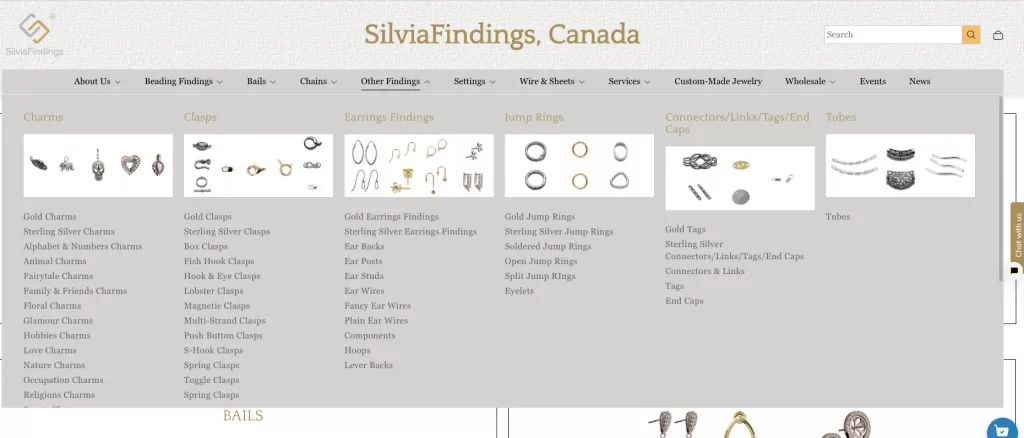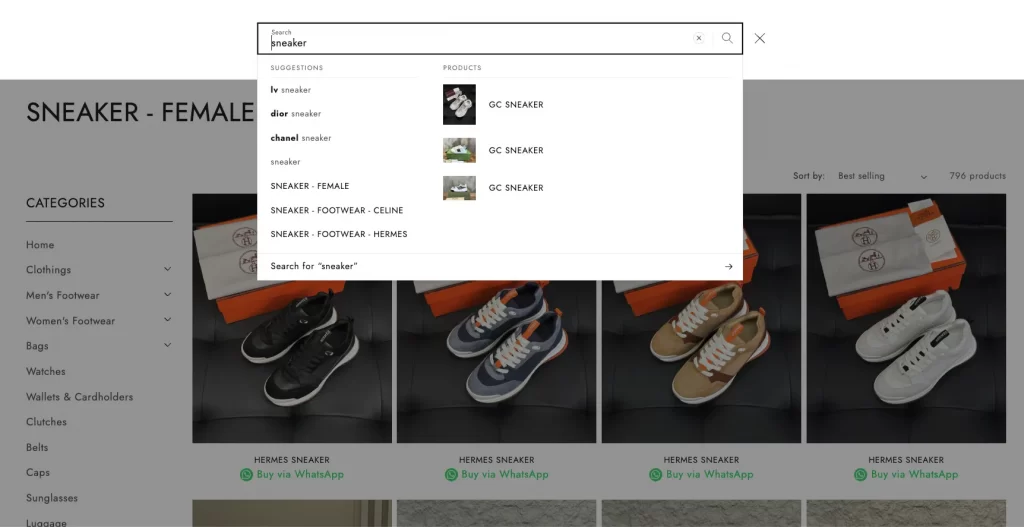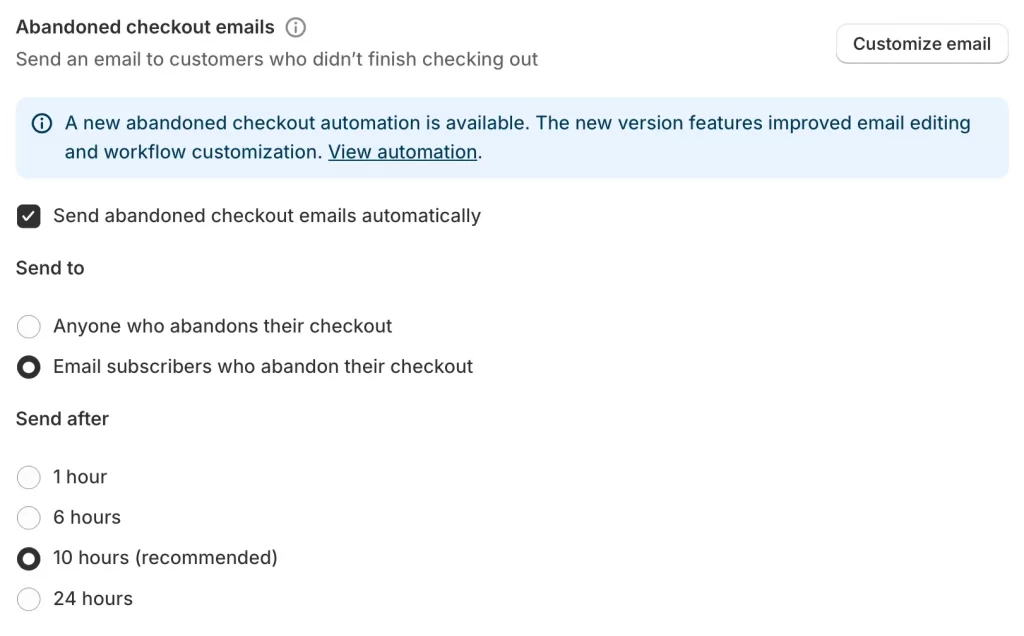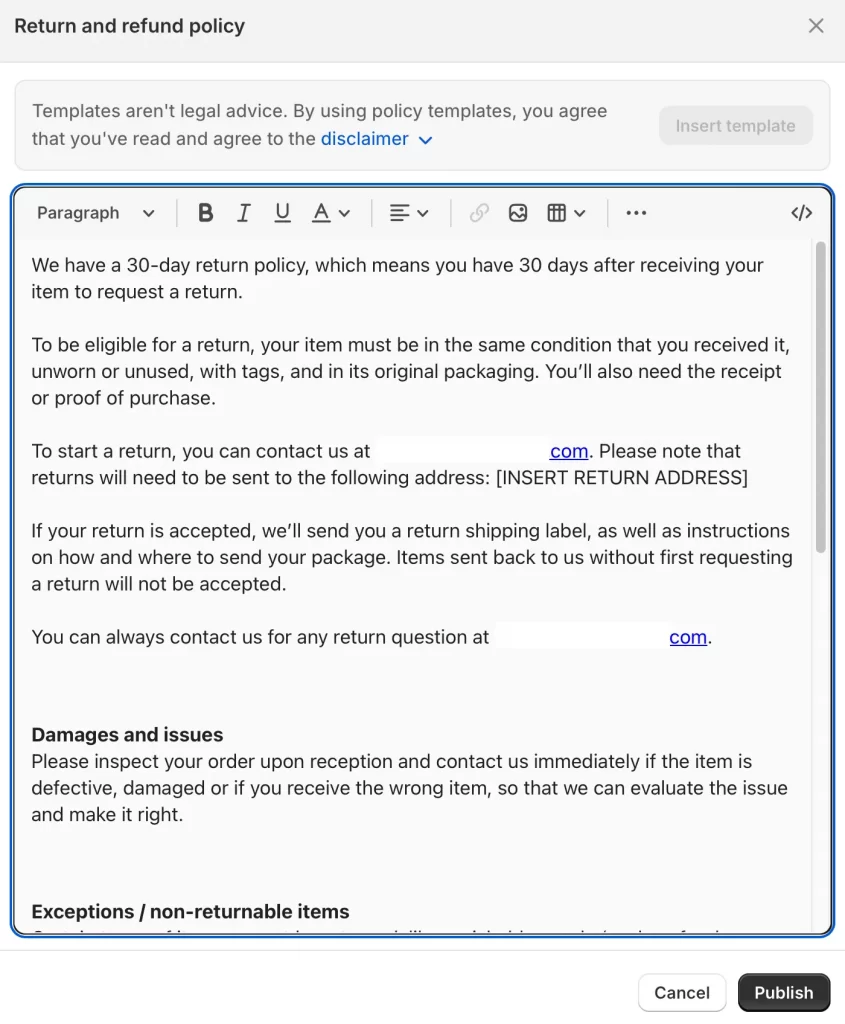
How to Increase Conversion Rate on Shopify: 18 Proven Tactics for 2025
If you’re wondering how to increase conversion rate on Shopify, the answer lies in optimizing every step of the customer journey, from the moment visitors land on your store to the final checkout.
In this guide, we’ll share 18 proven tactics for 2025 that you can apply immediately to boost sales, reduce cart abandonment, and turn more clicks into customers:
- Improve site speed and mobile responsiveness
- Use clear navigation and a simplified menu structure
- Invest in high-quality product images and videos
- Write benefit-driven product descriptions
- Showcase social proof with reviews, testimonials, and user-generated content
- Shorten and simplify checkout form fields
- Enable guest checkout to reduce friction
- Offer multiple payment methods (Shop Pay, Apple Pay, PayPal, etc.)
- Optimize site search for faster product discovery
- Show shipping costs early to avoid surprises
- Send abandoned cart recovery emails
- Offer limited-time discounts and promotions
- Run retargeting ads for past visitors
- Add exit-intent popups with incentives
- Personalize offers using Shopify customer data
- Highlight a clear return and refund policy
- Display trust badges and security assurances
- Offer responsive customer support (live chat, email, phone)
These are the same conversion optimization approaches we use at LitOS to help brands scale smarter on Shopify. Now, let’s start right away!
Understanding Shopify Conversion Rates
Your Shopify conversion rate optimization journey starts by knowing your baseline.
A conversion rate in Shopify is simply the percentage of visitors who complete a purchase in your store. You calculate it by dividing the number of orders by the total number of visitors in a given time frame, then multiplying by 100. For example, if you had 600 orders from 20,000 visitors last month, your conversion rate would be 3%.

So, what’s considered good?
Across Shopify, the average ecommerce conversion rate typically falls between 2% and 3%, while top-performing stores often see 4% or higher. Your rate can vary depending on your industry, traffic sources, and whether you sell to new or returning customers. The important thing is to establish your current baseline, and that way, you can track whether changes you make actually move the needle.
18 Tactics on How to Increase Conversion Rate on Shopify
1. Improve site speed and mobile responsiveness
One of the easiest ways to start if you’re learning how to increase conversion rate on Shopify is by improving site speed and mobile design.
Mobile commerce is now the default. According to ConsumerAffairs, 76% of Americans have made an online purchase using a mobile phone. That means speed and responsiveness on mobile devices directly determine whether visitors buy or bounce.
To optimize, here are the steps to follow:
- Compress images, remove unused apps or heavy scripts, and choose a lightweight Shopify theme built for performance.
- Use tools like Google PageSpeed Insights or Shopify’s built-in speed report, and always test your store on real devices.
A faster, mobile-friendly experience keeps shoppers engaged and pushes more of them toward checkout.
2. Use clear navigation and a simplified menu structure
Good navigation is one of the simplest forms of Shopify conversion optimization, helping shoppers reach products faster and make purchases with less friction.
At LitOS, we’ve seen how restructuring navigation alone can significantly increase conversions. For example, when we rebuilt SilviaFindings’ Shopify website, we introduced a well-structured mega menu to simplify browsing through their extensive catalog. We also added interactive animations to highlight featured categories and promotions, making the experience more engaging without overwhelming shoppers.

The lesson is simple: streamline menus, use clear category labels, and add subtle interactive elements that guide attention. When discovery feels effortless, customers are far more likely to move deeper into the purchase journey.
For new stores or businesses preparing for peak sales periods, getting these fundamentals right from the start is crucial. That’s why we created QuickLaunch Essentials – a Shopify setup package that gets your store live in just five working days. Starting from $599, it includes a mobile-optimized design, urgency timers, product bundles, and trust badges so you’re conversion-ready from day one.
3. Invest in high-quality product images and videos
On Shopify, your visuals are the sales pitch. We’ve seen time and again that stores with crisp, professional photography outperform those relying on generic or low-resolution images. Customers can’t touch or try products online, so sharp product shots from multiple angles, lifestyle images that show items in context, and short demo videos all help bridge that gap.

Shopify supports multiple media formats directly on product pages, including high-resolution photos, 360° views, and embedded videos, without requiring heavy custom code. This means merchants can easily showcase products in detail while keeping pages fast and mobile-friendly. For higher-ticket items, adding video walk-throughs or interactive 3D models can make the buying decision much easier.
4. Write benefit-driven product descriptions
A common mistake we see on Shopify stores is treating product descriptions as an afterthought, just a list of specs or features. The truth is, customers buy benefits, not bullet points.
A benefit-driven description highlights how the product solves a problem or improves the shopper’s life, while still including the technical details for clarity. For example, instead of just saying “100% cotton,” explain that the fabric is softer on the skin and breathable for all-day comfort.
Shopify makes it easy to create structured, scannable descriptions with rich text editing, allowing you to use headers, bullet points, and even multimedia for better readability.
For a deeper dive into writing copy that sells, check out our full guide: How to write a Shopify product description that converts.
5. Showcase social proof with reviews and testimonials
No amount of polished branding can match the power of real customer voices. At LitOS, we’ve seen firsthand how adding authentic reviews, ratings, and testimonials can significantly boost conversions by building trust at critical decision points.
Social proof reduces hesitation. If buyers see that others had a positive experience, they feel more confident completing their purchase.
Shopify makes it easy to integrate product reviews directly into product pages, and dozens of specialized apps enhance how reviews are displayed, from photo uploads to star ratings. Choosing the right tool is crucial, especially for stores with extensive catalogs or niche audiences.

If you’re looking to compare your options, we’ve broken down the top choices in our guide: Best review apps for Shopify.
6. Shorten and simplify checkout form fields
Every extra field in the checkout process is another chance for a customer to drop off. Long, complicated forms create friction and increase cart abandonment, especially on mobile. The most effective Shopify checkout pages ask only for essential information like shipping address, payment details, and contact info. Anything beyond that should be optional.

From our experience, reducing form fields can have an immediate impact on conversions. Shopify’s checkout editor and apps allow merchants to customize fields, remove unnecessary steps, and even auto-fill certain details. The goal is to make checkout feel effortless so shoppers stay focused on completing the purchase, not wrestling with forms.
7. Enable guest checkout
Forcing customers to create an account before buying is one of the fastest ways to lose them. Many shoppers, especially first-time visitors, just want a quick, frictionless purchase. Requiring registration adds unnecessary steps and can cause high abandonment rates.
Shopify allows you to enable guest checkout, letting buyers complete their order without setting up an account. You can still encourage account creation later by offering perks like faster re-orders, loyalty points, or exclusive discounts. The key is to remove barriers at the point of purchase and let customers decide when they’re ready to engage further with your brand.
8. Offer multiple payment methods
Shoppers expect flexibility at checkout. Limiting payment options can quickly turn interested buyers into lost sales, especially in international markets where preferred methods vary. The more familiar and trusted options you offer, the more likely customers are to complete their purchase.
Shopify supports a wide range of payment providers, from credit cards to digital wallets like Shop Pay, Apple Pay, Google Pay, and PayPal. Adding these options not only reduces friction but also builds trust by showing customers their preferred method is available.
For a step-by-step guide on setting this up, see our articles:
9. Optimize site search for faster product discovery
Shoppers who use search are usually the most ready to buy, but only if they can quickly find relevant results. If search feels clunky or incomplete, many will abandon the store in frustration. Optimizing site search ensures customers get to the right products without friction.

In our project with Tiiptop Luxuryyy, we implemented an intuitive filtering system across collection pages so customers could refine results by attributes like product type or brand. The filters were also optimized for speed and responsiveness across all devices, making the browsing experience smooth and efficient.
10. Show shipping costs early to avoid surprises
Hidden fees are one of the fastest ways to lose a customer at checkout. When shoppers only discover shipping costs on the final step, many abandon their carts out of frustration. Transparency is key so if customers know the cost upfront, they’re more likely to follow through.
On Shopify, you can display estimated shipping costs on product pages or in the cart, and many merchants use free shipping thresholds (e.g., “Free shipping over $50”) to both set expectations and increase average order value. Making costs visible early builds trust, reduces hesitation, and keeps the checkout experience smooth.
11. Send abandoned cart recovery emails
If you’ve been searching for tips on how to increase conversion rate on Shopify free, abandoned cart emails are one of the highest-impact steps.
Cart abandonment is one of the biggest leaks in any Shopify store’s funnel. Based on aggregated research from 49 different studies, the average ecommerce cart abandonment rate is 70.19% (Baymard Institute). That means 7 out of 10 shoppers who add items to their cart never complete checkout.

Abandoned cart recovery emails are one of the most effective ways to win back those lost sales. The most successful flows are timely, personalized, and include a direct link back to the cart. Shopify provides built-in abandoned checkout email functionality, and tools like Klaviyo or Omnisend let you go deeper with segmentation and incentives. Sending the first reminder within a few hours, when buying intent is still high, can make a measurable difference to your bottom line.
12. Offer limited-time discounts and promotions
Shoppers are more likely to act when they know a deal won’t last. Limited-time discounts, flash sales, or seasonal promotions give them a reason to buy now instead of waiting. These offers don’t just boost conversions but can also help clear stock and bring customers back for future sales.
On Shopify, it’s easy to set up automatic discounts, schedule sales, and display countdown timers through apps. The key is to make the promotion clear and time-bound: show exactly what the deal is and when it ends. Whether it’s “20% off until midnight” or “free shipping this weekend only,” giving customers a reason to act quickly can significantly lift conversion rates.
13. Run retargeting ads
Retargeting is one of the most effective tactics in Shopify conversion rate optimization.
Not every shopper buys on their first visit, and that’s normal. Retargeting ads give you a second chance by reaching people who have looked at products, added items to their cart, or started checkout but didn’t complete the purchase. A gentle reminder or a small offer can bring them back without the high cost of finding new customers.
On Shopify, you can set up automatic discounts, schedule sales, or use apps to add countdown timers. Keep the message clear and easy to understand, like “20% off until midnight” or “Free shipping this weekend only.” Simple, time-bound offers create a sense of urgency without feeling pushy.
14. Add exit-intent popups with incentives
Sometimes shoppers are ready to leave, but a well-timed message can change their mind. Exit-intent popups appear when someone is about to close the page. Offering a small discount, free shipping, or a reminder of what’s in their cart can be enough to keep them shopping.
There are plenty of Shopify apps that make setting up these popups quick and simple. Keep the message short, the design clean, and the offer worth noticing. When used carefully, exit-intent popups can save sales that would otherwise slip away.
15. Personalize offers using Shopify customer data
Generic promotions don’t always resonate. Personalization makes customers feel understood and increases the likelihood they will buy. Shopify gives merchants access to valuable customer data, such as purchase history, location, and browsing behavior, which can be used to tailor offers.
For example, you can send repeat buyers loyalty discounts, show region-specific promotions, or recommend products based on what a shopper has already viewed. Apps like Klaviyo or Shopify Email make segmentation and automation straightforward. For more ideas, see our guide on Shopify personalization and how to use it to drive more sales.
16. Highlight a clear return and refund policy
Shoppers often pause if they are unsure what happens when a product doesn’t work out. A clear return and refund policy removes that doubt and builds trust. Keep it easy to find on product pages, in the cart, and at checkout.

On Shopify, you can create a dedicated returns page and link it in your footer or FAQ. Many stores also add simple notes like “30-day returns” or “Free exchanges” right on the product page. Being open about returns gives customers the confidence to buy without second-guessing.
17. Display trust badges and security assurances
Customers want to know their payment details are safe. Simple signs like SSL locks, credit card logos, or “secure checkout” icons make a big difference, especially for first-time buyers.
Shopify already provides a secure checkout, but you can build more trust by showing familiar badges such as Visa, Mastercard, or PayPal near the cart. Pair these with clear contact details and visible policies, and your store will feel more reliable. When shoppers feel safe, they are more comfortable completing their order.
18. Offer responsive customer support
A quick answer can be all it takes to turn a visitor into a buyer. If customers can’t get help fast, they may leave and shop somewhere else.
On Shopify, you can add live chat, reply quickly to emails, or set up a simple FAQ page. Even an automated response for common questions helps keep shoppers engaged. Showing that help is always within reach builds trust and often makes the difference between hesitation and a completed purchase.
And that’s all 18 tactics on how to increase conversion rate on Shopify!
How to Increase Conversion Rate on Shopify: FAQs
Why is my conversion rate so low on Shopify?
Low conversion rates usually come from friction in the buying journey. Common causes include slow site speed, poor mobile design, complicated checkout steps, hidden shipping costs, or a lack of trust signals such as reviews and clear policies. Addressing these issues usually delivers the biggest improvements.
What’s a good conversion rate for a Shopify store?
Most Shopify stores convert between 2% and 3%, while high-performing stores see 4% or higher. Your benchmark will depend on your industry, pricing, and traffic quality. Even small improvements can make a big difference to revenue.
How to make a high-converting Shopify store?
You should focus on customer experience from start to finish. That means a fast, mobile-friendly site, clear navigation, persuasive product pages with strong visuals, simple checkout, and post-purchase communication. A high-converting store feels effortless for the shopper at every step.
How often should I run CRO tests on my Shopify store?
It’s best to review your store’s performance monthly and run A/B tests on key pages or elements every quarter. Regular testing ensures improvements are based on data and keeps your store evolving with customer behavior.
Which Shopify apps help improve conversion rates?
Review apps build trust, personalization apps tailor offers, and email tools like Klaviyo or Omnisend help recover abandoned carts. Other useful categories include upsell/bundle apps, exit-intent popups, and Shopify’s own Search & Discovery app for smarter product filtering.
Key Takeaway
Improving conversions on Shopify is about more than following a checklist. It’s an ongoing process of refining design, removing friction, and building trust with every visitor. The tactics in this guide are a strong foundation, but the best results come when they are applied in a way that fits your brand, your products, and your customers.
And if you’d like a partner to help bring these ideas to life, that’s exactly what we do at LitOS. From UX/UI design to full Shopify development, we build stores that don’t just look great but convert.
👉 If you’re ready to take the next step, explore our Shopify Development Services to see how we help brands turn strategy into measurable growth.

